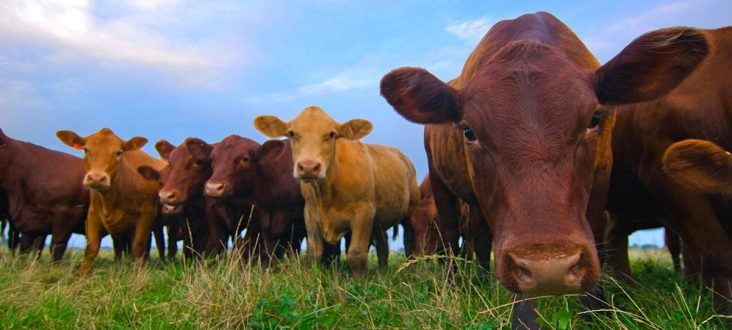Agriculture industry faces uphill battle on pricing, will continue into 2017
by January 25, 2017 1:35 pm 407 views

The state’s largest industry faces continued depressed pricing from over-supply, but an agriculture expert sees potential in regulation roll-back.
Travis Justice, associate director of commodities and public policy for the Arkansas Farm Bureau, calls the outlook for the state’s agriculture industry a “mixed bag” going into 2017. Almost all commodities now have an oversupply, causing reduced prices for crops and livestock, Justice said. According to the Arkansas Farm Bureau, agriculture is still the top industry in Arkansas, and was credited with “adding around $16 billion to the state’s economy annually.”
In its recent 2016 financial outlook, the U.S. Department of Agriculture said net cash farm income is forecasted at $90.1 billion and net farm income at $66.9 billion for 2016, down for the third consecutive year after reaching record highs in 2013. Net cash farm income is expected to fall by 14.6% in 2016, while net farm income is forecast to decline by 17.2%. These declines follow the 19.8% and 12.7% reductions in net cash income and net farm income, respectively, that occurred in 2015.
Closer to home, the 2016 wet growing season and heavy, sustained rain in August is estimated to have cost Arkansas row crop farmers $40 million to $50 million, and may prompt changes in Arkansas’ row crop landscape for 2017, according a recent report by the University of Arkansas Cooperative Extension Service. At the same time the livestock side of farming is also facing tough times ahead.
“In the last two years, cattle markets have gone from record highs to dismal lows,” said Mike Looper, department head for animal science at university agri cooperative. “In 2016, beef production expanded nearly 6% and is projected to increase an additional 4% again in to the next year. Record beef output means lower prices moving into 2017.”
Justice said the lackluster earnings have taxed farmers’ ability to finance operations, kept some farmers from expanding, put a strain on farm credit markets and possibly forced some out farmers of the business – although that has not been seen on a massive scale.
“We’ll carry these depressed levels well into 2017, before we start seeing what the indications of next year’s crop is,” Justice said.
On the crop side, the country had the second- or third-largest production level in history for corn, soy beans and other grains. In fact, U.S. farmers put out 5.2 billion bushels, about 1 trillion pounds, of corn in 2016, up 11% from the previous year, according to the USDA National Agriculture Statistics Service. About 132 million of those bushels were produced in Arkansas, where production was up 39% from 2015.
Arkansas farmers produced about 12 billion pounds of rice in 2016, comprising almost half of the country’s rice production, according to the USDA. In 2015, Arkansas produced about 10.6 billion pounds.
Record levels of beef, pork and poultry production will only increase in 2017, according to projections. This year, soaring production drove prices down. Five-area slaughtered steer prices, for example, averaged $105 to $108 per hundredweight for the fourth quarter of 2016, 17% lower than a year ago, according to the USDA Economic Research Service.
Export interruptions are adding to the pricing and oversupply issue in the U.S., Justice said. More than one-third of the value of all of Arkansas agriculture’s production is exported, “so maintaining access to those export markets is an integral part of the marketing dynamic here,” Justice said.
While President Donald Trump’s vow to nix some major trade deals has “created some angst” in the state agricultural industry, Justice believes the agriculture portions of those agreements have a fair chance of surviving, partly because the U.S. consistently runs a surplus on raw farm products, he said. (Trump did pull out of the Trans Pacific Partnership trade proposal.)
“Ag has a compelling argument to make to preserve as much as possible. We think we’ve got a positive story to tell, so hopefully we can get buy-in with that portion of our trade concerns,” Justice said.
He also hopes the new administration will halt the “ever-mounting regulatory burden” on farmers.
“We think there needs to be some balance to some of these far-reaching regulations that allows commerce to continue but still provides some necessary safety measures, in addition to safeguards for the environment,” Justice said. “In some areas we think we’ve kind of overreached our bounds, to where it is deterring productivity and profitability.”
Agriculture has a stake in environmental and labor regulation, in addition to immigration, because of the use of migrant farm workers throughout the country. “It plays a key role in agriculture,” he said.
(Talk Business & Politics Senior Analyst Wesley Brown contributed to this story.)
